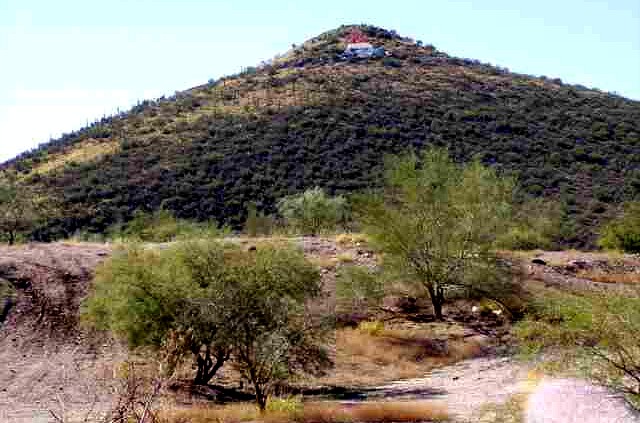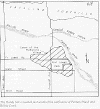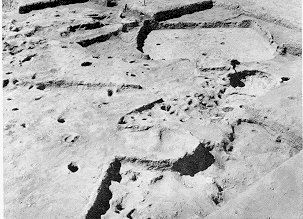
Prehistoric and Hohokam history in Tucson Area.

Photo 2004 Photo 1937 with farm and horses.
Located at the foot of "A Mountain" is the site of Pima Indian village called Schuk-shon, meaning the place at the foot of the Black Mountain. Pronounced "Tucson" by the Americans. This may be the site of an 2500BC village. Excavation scheduled for 2006 - 2008. At the Rio Nuevo site, they have found artifacts dating from 2200 B.C.
"The
Hohokam lived in the Tucson basin from about 1 A.D. to around 1450 A.D. They
adapted themselves to the
desert environment by farming along drainages [The Santa Cruz River which flowed
year round] and hunting and gathering in the
desert and mountains.

 Hardy Hohokam site in Fort Lowell
Park.
Hardy Hohokam site in Fort Lowell
Park.
"Around 450 A.D. the Hohokam began making pottery and digging ditches to water the varieties of corn, beans, squash, and cotton [from Mexico]. However, they also retained, the seasonal hunting and gathering of their Archaic[2,000 B.C. to 150 A.D.] predecessors. About half of their food was cultivated in fields, and the rest was collected by villagers who maintained seasonal camps in the mountains and foothills.'
Hohokam Big House. Casa Grande National Monument.
"Before 1250 A.D. homes within a village tended to be distributed somewhat randomly with people living in rectangular pit houses built of wattle-and -daub (i.e., framework covered with mats and grass, followed by a covering of mud) with roofs of either thatch (for sloped roofs) or mud (for flat roofs). After 1150 A.D. pit houses were no longer built. Instead , people began living in dried mud houses built entirely above ground. One of the best examples of this type of village is the Great House at Casa Grande."
Example of large village
around 1300A.D.
"After
1300 A.D., influence of the Hohokam began to dwindle in the Tucson area, and cultural
ties were strengthened with the Mogollon people to the north and east, resulting
in a blend of Hohokam and Mogollon traits in the Tucson Basin. Around 1150 A.D.
villagers began building adobe-walled houses. After 1450 A.D., the Hohokam culture disappears. The reasons for these cultural changes are
unknown,
but environmental deterioration (perhaps including droughts) and changes in
social organization brought about by the collapse of major cultures in
Mesoamerica [Mexico] may have been possible causes."
Under this parking lot, where the weeds are, is the 1954 excavation of an 650 to 950 A.D. pit house. Fueling the argument that Tucson may be one of the oldest continuously inhabited cities in America.
Go to the "Picture Rocks Site."
"By 1500 A.D., the Tucson Basin Indians had resumed to living in scattered rancherķas. These people, known today as the Pimas and Papagos, [Tohono O'odham] descendents of the Hohokam] were encountered by the Spanish in the 1694, when they first entered the Tucson Basin."
By
Linda M. Gregonis & Karl J. Reinhard